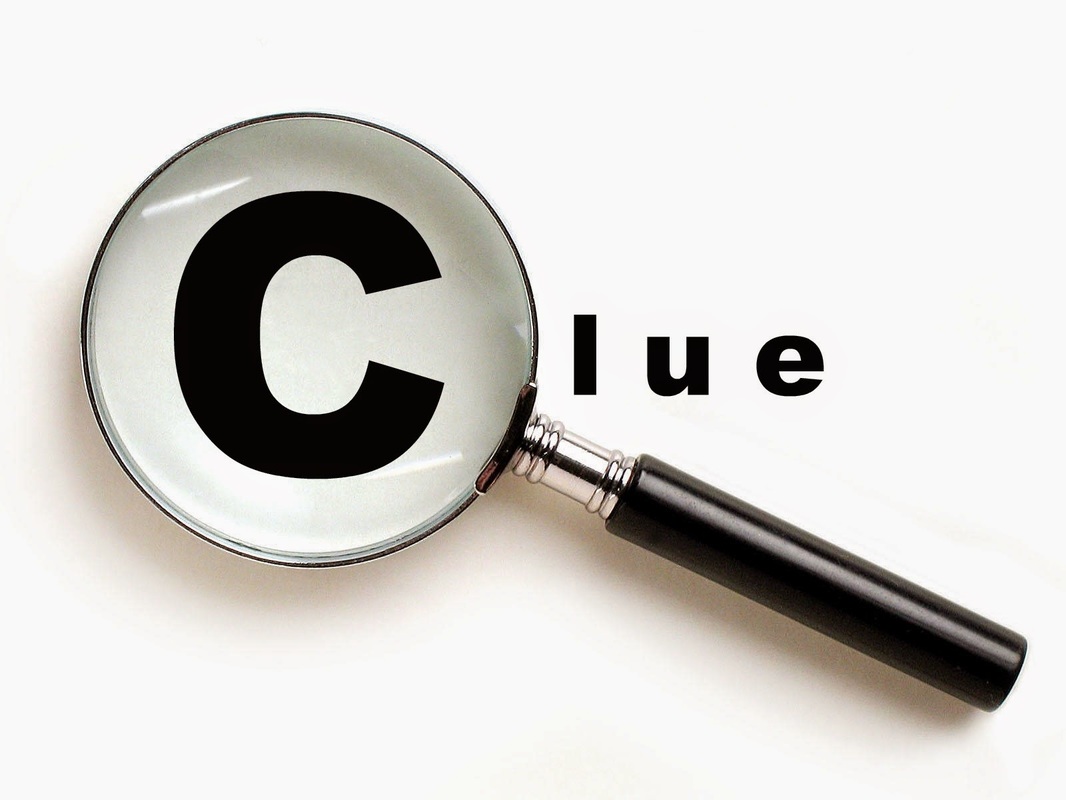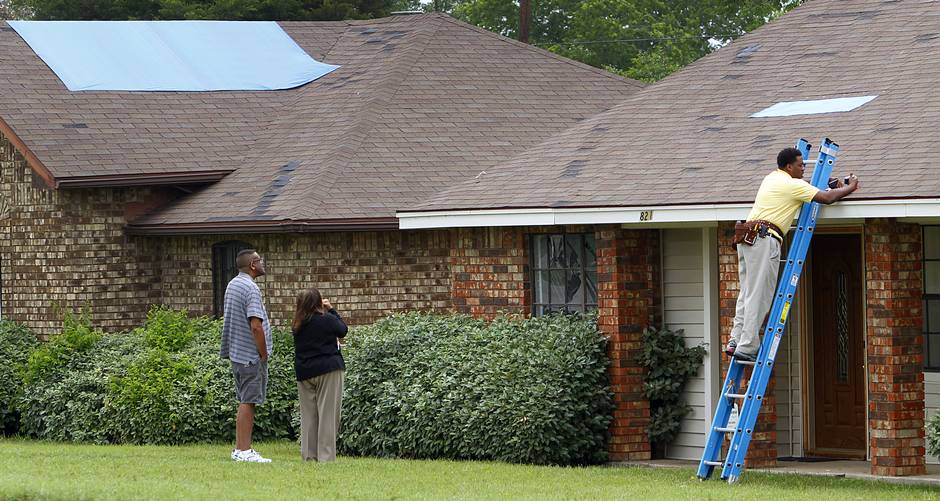|
When disaster strikes, it may make sense to pick up everything as quickly as possible so that you can resume life as usual. Unfortunately, many insurance companies rely on that eagerness, as policyholders tend to miss important pieces to their claim. In the end, the insurance company is likely to profit from your rush to get a settlement, and they’re hoping you’re in a hurry to be done with the entire ordeal.
While you’re probably already feeling stressed and anxious about getting your settlement from the insurance company, it literally pays to take your time during the claims process. Here are three big reasons why you shouldn’t rush to get your settlement after a property loss.
Get advice from an experienced attorney before you sign any type of waiver form, as this is your only shot at getting the settlement you deserve. Don’t accept any checks with words like “full” or “final” “settlement” printed on them, and understand that your policy does not require you to sign away any legal rights in order to get paid fairly for a covered loss.
0 Comments
We recently discussed when to file a claim and when to forego reporting property damage or loss to your insurance, and one of these reasons is that simply filing a claim can boost your insurance rate or cause your insurance company to reconsider the relationship altogether. But how does an insurance company track your claims, especially if they’re not your current insurance carrier?
A database called CLUE (Comprehensive Loss Underwriting Exchange) may already have your name on it, so it’s important to know what that database is all about and how it may affect your coverage options in the future. The vast majority of consumer insurance claims are recorded in one or both of 2 databases: CLUE or A-PLUS. Generated by LexisNexis, CLUE is the larger of those two databases and is a claims-information report that contains up to seven years of personal-auto and personal-property claims history. The database was originally created to thwart the efforts of those attempting to commit insurance fraud, but its uses far extend past that goal and can now impact those who are simply utilizing their insurance for its intended purposes. The reports generated by CLUE are known as ‘CLUE Reports’, and it’s estimated that more than 98% of insurers writing automobile and homeowners coverage provide loss data to the CLUE databases. That means that information such as:
are all recorded here in the CLUE database. The issue arises when insurance companies begin to use CLUE for more than preventing fraud and instead using this database to research and screen applicants' claim histories. But how can this be damaging? An insurance carrier may submit information to CLUE when a customer simply calls on an inquiry. That means that the more you file a claim or call about an inquiry, the more ammunition your insurance carrier has to boost your rates or drop your coverage altogether. Insurance companies should only be accessing the database when a claim is filed, but there’s nothing stopping them from researching your information on a whim. Because if your insurance company accesses the database for any reason, it’s counted as a claim - not an inquiry. And the more accessing that’s done on your information, the more ‘claims’ are filed in CLUE. To get a free copy of your CLUE report, contact LexisNexis either online or by calling (866) 312-8076. When your property suffers loss or damage, one of the first steps you’ll take is to file a claim with your insurance company. For many, the process can become a burden, prolonging the effects of the damage and causing strain and anxiety for the insured. Insurance companies and claims vary drastically, and the variations extend to the quickness that the issue is resolved as well. While many may see their settlement paid within as little as a week, others are dragged on for weeks and months on end.
It’s probably obvious to most that the biggest hassles come with the biggest claims, as insurance companies are going to do everything they can to save a few bucks. Only when a tipping point between effort exerted and moneys saved will insurance companies typically let up a little, but property owners typically reach their breaking point much earlier and give up the fight for their owed moneys. Here are three big tips to getting your insurance claim paid quicker:
Insurance claims and settlements can be a smooth process or a bumpy ride. Select your insurance company wisely, and take the time now - before disaster strikes - to prepare for the worst. It seems simple enough: You purchase property insurance, and it would naturally follow that any time there’s damage or loss of your insured property, you file a claim. But years of experience have taught us that it’s not always so straightforward, and those who file too often or for too much may find their policies being cancelled by their insurance company.
One claim every ten years on a homeowner’s policy, for instance, is the norm in the industry. Claim activity above and beyond that norm signals a red flag to underwriters who then take a closer look at your policy and whether or not they want to keep you protected. It makes sense for the insurance companies who are looking to save the most money to keep only those insured who file the least amount of claims, but this notion butts up against the idea from consumers that they should be covered for any of their claims during any year that they pay for their insurance. So what’s a homeowner to do? The sad fact of the matter is that this disconnect between underwriters and homeowners will continue to drive homeowners towards never claiming the ‘small stuff’ until there are more protections for homeowners, insuring that they continue to be...well, insured! Before you start feeling disheartened, see if some of these tips can be incorporated into your life and your policy to help make things a little easier:
At the end of the day, whether or not you file a claim should rest on a few different variables - the biggest of which should be the amount of the claim you plan to file for. Save for small losses and file only for the larger ones to help prevent you from losing your homeowner’s insurance altogether. Storms are a typical weather event for almost every region in the United States, but some areas are more susceptible to severe storms than others. Even if you’re located in a generally calmer part of the states, a particularly strong storm can cause acute but severe damage to your property. Damaged roofs, waterlogged basements, and utter destruction of your home could occur with a single strong storm such as a tornado. Whether you’re at risk for a severe storm due to your location or are simply just preparing for a worst-case scenario that likely will never happen, you’ll want to check out these tips on filing for property damage with your insurance company after a storm event.
Know Your Policy Homeowner’s policies are generally all alike in that many of them cover damages due to the following:
Ensure Safety and Document Damage Storms and other weather phenomena can render your living situation unsafe. Know that your insurance policy may pay for temporary relocation costs, but be sure to hire a professional storm inspector to assess the damage and ensure your safety before you proceed. Roof, window, and structural damage can all create an unsafe living environment. In addition, other damage such as exterior damage to paint and siding can rack up costs for you and your insurance company. After the storm passes, treat your home like it's a crime scene: before moving anything, take plenty of photos and/or video, inside and out. You’ll want to carefully document all damages, and keep your documentation well-organized for when it comes time to report to your insurance company. Repairwork Temporary repairs are likely a ‘must’ before your claim is settled, so before you do your repairs, ensure that you’ve recorded everything thoroughly. Cover broken windows, patch leaky roofs, and clean up debris where possible. If you choose to hire a contractor, make sure that they aren’t a ‘storm chaser’, which is a type of contractor who goes to areas hit by storms and tries to take advantage of homeowners who don’t know any better. Always look for licenses and reviews. Your contractor should have extensive experience working with insurance companies and, thus, should be able to help you navigate the process of getting repairs paid for and completed. Regardless, it's a good idea to get any quotes approved before proceeding with work on your property. Save all receipts, including those from any temporary repairs made to your home. Don’t let the damage from a storm outlast the natural event itself. Filing a claim for personal property losses can be the result of a variety of disastrous situations. From theft to fire, there are a multitude of reasons why one may suffer a personal property loss that could constitute filing an insurance claim. Fortunately, regardless of the reasonings for filing, there are many proactive measures that one can take to save headaches down the road. When you file a personal property claim, you’ll be asked to take inventory of all of the items you’re filing for, and just the thought of doing so can be overwhelming to many, especially those who have lost everything. Here are some home inventory claim tips to keep in mind should you ever need to file a personal property claim.
Create an Inventory Spreadsheet It can be difficult to find where to start when you need to take an inventory of your personal property, but before you begin, set yourself up for success. Plan and organize your method of attack by creating a simple spreadsheet for your items. Separate your spreadsheet into different groupings based on rooms in your house or by item type to further organize your list. Include the following in your spreadsheet:
Be sure to take pictures as well, and add a column where you can attach the photo of each item accordingly. This can be especially helpful for damaged goods that may get discarded. Don’t forget to use your friends and family to help you remember items that you may have forgotten. Create a ‘Registry’ to Help Organize When you’re tasked with estimating the costs of your items (that you may have purchased many years ago), it can be difficult to put a price on your goods. Hit up a local department store, and create a registry. Then, take your inventory list around to comparable items, and scan them to get the price. In this manner, your registry is actually an inventory list for your items that includes the cost of those items as well! You can also create these registries on online shopping websites as well to cut down on the time that’s spent navigating a brick-and-mortar store. Plus, you’ll be more likely to find the exact items you had when you have the internet at your disposal as opposed to what’s in a store. Consider a ‘Cash Out’ Settlement Sometimes creating an inventory list is simply unmanageable, especially for those who are experiencing a total loss of their goods (such as can happen with fires, for instance). Instead, consider a ‘cash out’ settlement, or negotiate a settlement just below the claims maximum or contents policy limits in order to remove the need for a complete inventory list. You’ll need to consult with your insurance company if you want to negotiate this type of settlement. The events leading up to filing a claim can be some of the worst in a person’s life. Burglary is one of those events that can cause emotional damage that far outlasts the financial, leading one to feel unsafe and insecure for years to come. Fortunately, much of the value of one’s stolen property can be regained through an insurance claim -- if done correctly. Insurance companies are notorious for trying to save the most money when it comes to claims, and they’ll look for any discrepancies or issues during the claims process in order to save the most money and fulfill the least amount of the claim as possible. When filing a theft claim, don’t be burglarized by your insurance company too. Here are some tips to keep in mind.
Burglaries occur once every 14.6 seconds according to the FBI. For most of those victims, they’ll rely on their insurance to cover much of the loss. Preparing before the crime ever happens can save you a headache down the road, but it will also pay to know what to do should the worst ever arise. Prepare Ahead of Time Big purchases are going to be some of the biggest points of contention in the case of burglary. If you ever need to file an insurance claim due to theft, it will save a lot of time and energy if you already have the receipts from these big-ticket items. Take inventory of your personal property, and organize your items in a checklist. Keep the original sales receipts for these important items (especially if they are covered for Replacement Cost Value). If you’re unsure where to start, then begin with items that a burglar would target first like electronics and jewelry. Immediately After a Burglary After a theft has been committed and you’ve ensured the safety of all, then it’s time to begin securing your property and taking stock of what’s been stolen. Right after a burglary, follow these steps:
File Your Claim If you don’t have a checklist, then it’s time to start recording information about each item that has been stolen. Report the following to your insurance company for claims purposes:
 Fire can cause catastrophic devastation to one’s property, and what remains after the smoke clears may be a pile of ash as a claim for the insured. While the fire itself can be a lifechanging experience for the worse, your insurance claim doesn’t have to be. When navigating the intricacies of fire damage claims, it’s important to know some of the key tips that can ensure a smooth claim process. Here’s what to do after the smoke clears when filing your fire damage insurance claim. Immediately After the Fire After the fire has subsided and been exterminated, firefighters will need to assess the area for safety. These fire responders are responsible for giving you the ‘all clear’ on your property, which means that you’re able to safely begin to navigate the area. At this point, you’ll take you first steps back into the affected areas and can begin to reclaim your items. Run through the following checklist:
Insurance Company Review Contact your insurance company as soon as possible to begin the claims process. Be present during all inspections, and DO NOT dispose of any debris or items without having your insurance company review. Keep in mind that investigators will often question and challenge the cause of the fire, the items lost in the fire, and the building components. Each of these aspects can become fuel for insurance companies to not pay the full claim amount, so this is where it pays to be diligent in your records and reports. Inventory and Report Keep in mind that your insurance adjustor will likely take photos, but do not solely rely on these. Instead, take your own photos and videos of the situation and items, even if they’re being disposed of. Inventory everything, and always keep receipts for items that need repaired along with a photo of the item. Pay special attention to items with a serial number, and take photos for insurance purposes of the item’s serial number. Some insurance companies pressure their policyholders to provide an initial list of items damaged or destroyed, promising those policyholders that additional items can be added later. Be sure to shrug off the pressure and take your time with your list, as insurance companies are notorious for arguing in court for the claim values on the first list rather than the amended final list, noting that the policyholder would or should have remembered certain high-value items initially. At the end of the day, it pays to consult with a professional. Protect yourself by being prepared, and ensure that your adjustor pays for 100% of your claim. These tips for fire damage are just a short list, but they’re necessary steps when dealing with fire damage claims.  Filing a claim can be a daunting task, and the road to success can be wrought with obstacles that can throw the unwary traveller offcourse. For many, filing a claim is simply not a common occurrence, and this can make the legalities of the journey even more confounding and oppressive. While each claim is unique unto itself, the fact of the matter is that the process of filing a claim is fairly simple to navigate when you have a general outline of what to expect. Here’s a simple roadmap to filing a claim for your property. Before You Begin… We’ve probably all made a call to schedule a routine appointment with our doctor’s office and heard a recorded message about contacting 911 or other emergency services if we’re in a life-threatening situation. While filing property claims isn’t so extreme, it’s important to take similar steps in contacting the police or fire department if necessary before beginning the journey towards the legalities of claims. Handle the situation with emergency responders first (and be sure to collect a copy of the police report if one is filed) before proceeding forward. Report the Claim Contacting your insurance agent is the immediate next step and will begin your journey towards collecting for your claim. You’ll want to have the following on-hand:
At this point, it’s likely that your case will be assigned to a representative who will then give you a claims number for your case. During the interim, you’ll need to ensure that you have all necessary details aligned. This includes a room-by-room list with pictures and videos where possible of stolen, damaged or destroyed property. Be sure to include brand name, model number, age, purchase price, place of purchase and replacement cost when you can to ensure that you receive the proper reimbursement. If you can, save the damaged property until the investigation is complete. Next, your claims representative will collect the details of the claim and explain your benefits. They will likely be charged with a multitude of tasks which could include:
If the property losses are small, then your claims representative may suffice with asking you for a repair estimate, which you can obtain from a contractor. Be sure that all damages are identified at this point, as this is the basis for your total claims amounts. Organize Temporary Relief If you’re filing a claim, you’re likely going to feel the burden of the damages before the claim amount is fulfilled. This means that you’ll need to temporarily ‘bandage’ the situation while the claim is being processed. Ensure that your property receives no further damage by temporarily repairing the existing issue. This could mean installing a new lock on your door, covering exposed holes in your roof, or replacing broken securities such as doors, windows, etc. You’ll want to ensure that you keep all of these receipts so that you can be reimbursed for the repairs as well. During this ‘temporary relief’ stage, anyone who must temporarily relocate to an apartment or hotel will do so while keeping in mind to retain all of their receipts and expenses for reimbursement down the road. This includes meals and travel as well, as they’re considered ‘additional living expenses’. Give your forwarding address to the claims representative if you need to seek temporary shelter outside of your regular address. The Settlement Agreement Once a settlement agreement is reached, a check will be issued to you immediately for the claim amount. Certain cases will see an advance on the settlement which can be used to begin paying for repairs and other necessities.  Social media is used by over 67% of Americans, and insurance companies are utilizing this outlet as a tool during claims investigations. Homeowners or business owners are just as human as the rest of the population, so it’s no surprise that many of these policyholders are part of the growing 67%. When homeowners and business owners suffer an unfortunate loss and seek to file a claim, insurance companies respond by researching the claim in its entirety, and social media is not out of the question when they’re gathering their evidence. Insurance companies seek to utilize all tools in their arsenal when policyholders file a claim, and social media is a public way for them to gain easily-accessible information that the policyholder has made freely available. Even if you haven’t posted anything since filing a claim, information you posted previously can still be used as leverage for insurance companies seeking to back up their stance. Anything that can be used to raise a red flag or deny or postpone your claim can be acquired easily by insurance adjustors who simply log on to these social media sites. Consider that insurance adjusters don’t just ‘show up’ for examinations or recorded statements. It’s their job to gather all pertinent evidence beforehand, and this means that by the time you’re sitting down for a recorded statement, they’ve likely already done their research and combed through social media websites. Information that isn’t even directly correlated with the claim at hand can be used by insurance companies to help judge your character, and this can influence how quickly or slowly your claim is processed. For instance, regardless of whether or not a claim is directly related to you personally, an insurance company can still judge you based on what you’ve posted on social media websites. Even if responsibility and liability seem utterly clear, that judgement of character can come back to impose on the swiftness (or lack thereof) of the processing of your insurance claim. Thus, it’s important to note the different types of information and/or posts that could be used by insurance companies that may not be directly related to your claim. For instance, posts and/or pictures with this type of information can be a wealth of information for your insurance provider:
Many of these posts are indicative of your spending habits which can be used as a way to gain insight into your financial situation. These insights can insinuate reasonings why you would file a claim beyond the claim reasonings themselves, and this insinuation is what will fuel the arguments by insurance companies. It’s a tactic that insurance companies utilize, especially when liability and responsibility are clear-cut. So what can you do to combat this? Nobody expects a sudden loss, so it’s always best to take proactive measures into monitoring what you post on social media outlets at all times. Also, before you file a claim, be sure to understand the ‘research’ that your insurance company will do, and filter your old posts beforehand. Get involved in your claim, and do your part in ensuring that the insurance company has no reason to deny or postpone your claim. |
DisclaimerBy using our Website, you agree to the Terms of Use. Archives
January 2016
|








 RSS Feed
RSS Feed
